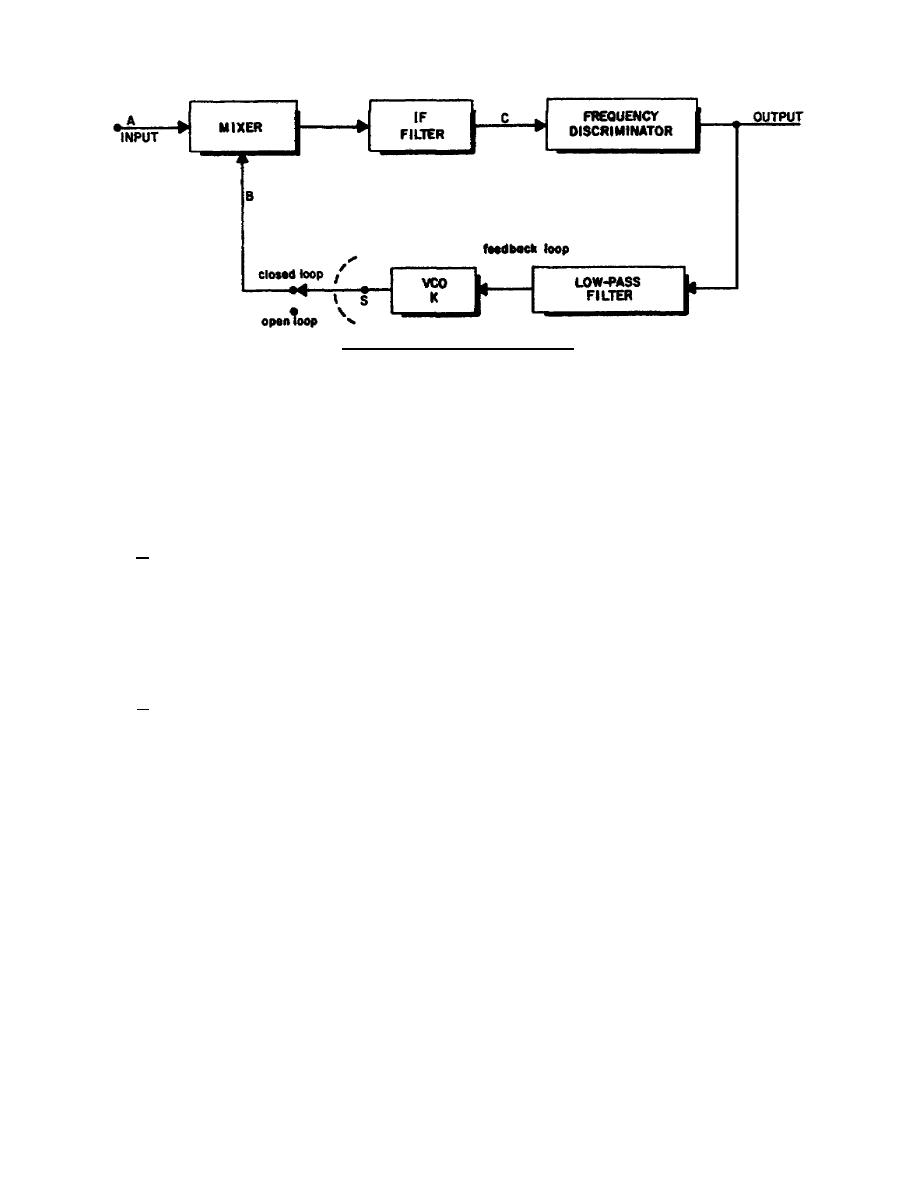
Figure 110. FMFB block diagram.
waves. The difference frequency is selected by an IF filter. This difference frequency at point C will have a
modulation index M3 which will be the difference of the modulation indexes of the two FM waves (M3 = M1 -
M2). This resulting waveform with reduced deviation may be passed through a filter whose bandwidth is
approximately M3/M1 times that required of the large deviation wave. The signal is then frequency-detected in a
circuit such as a discriminator. The second FM wave (M2) can actually be derived by feeding the output signal of
the frequency discriminator through a low-pass filter to frequency-deviate a voltage-controlled oscillator (VCO).
The larger the gain in the feedback loop, the more the input deviation is reduced in the IF.
d. To explain the threshold improvement gained by using FMFB, the threshold mechanism of
conventional FM will be detailed. The threshold occurs in a conventional FM receiver when the random-noise
peaks exceed the carrier amplitude prior to the frequency detector (discriminator) for a sufficient percentage of
time. Each time a noise peak exceeds the carrier amplitude, an impulse in amplitude (a spike) appears at the
frequency discriminator output. This noise appears as a random sequence of spikes which are heard as sharp pops
in an audio system or seen as spots on a TV screen. For voice, data, or TV channel, operation below threshold is
generally unsatisfactory.
e. The FMFB, then, must reduce these noise spikes, and thereby reduce the threshold. This is
accomplished by feeding the detected signal and noise back to the VCO. The noise that is fed back will reduce
the incoming noise, thereby reducing the threshold of the system; and, at the same time, the improvement factor
for high-level signal-to-noise ratios will remain that of the transmitted wave. These are significant improvements
in terms of equipment. To demonstrate this action, let us take two examples.
(1) First, a 100,000-to-1 (50 db) signal-to-noise ratio is desired at the output or baseband signal. By
using conventional FM (fig. 6-2), a minimum carrier-to-noise ratio of 560-to-1 (27.5 db) is
required; for FMFB, only 70-to-1 (18.5 db) is needed. This means that by using FMFB we are
able to reduce the carrier power by 9 db, which is a factor of 8.
344 L3
118



 Previous Page
Previous Page
